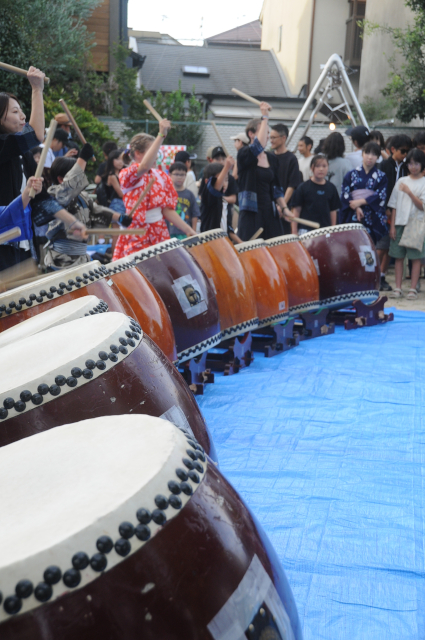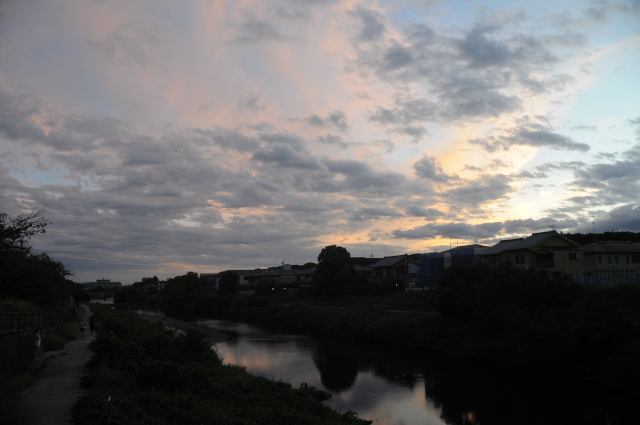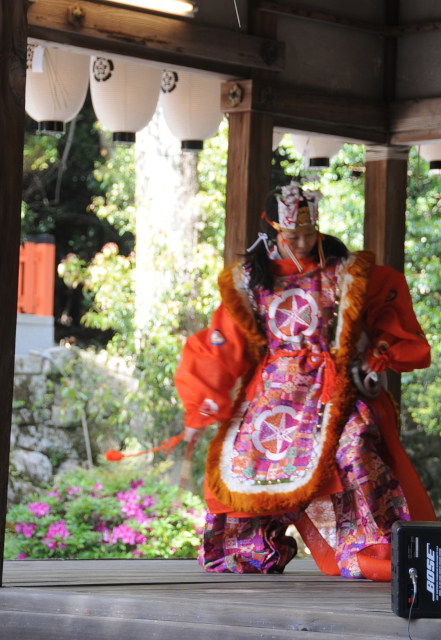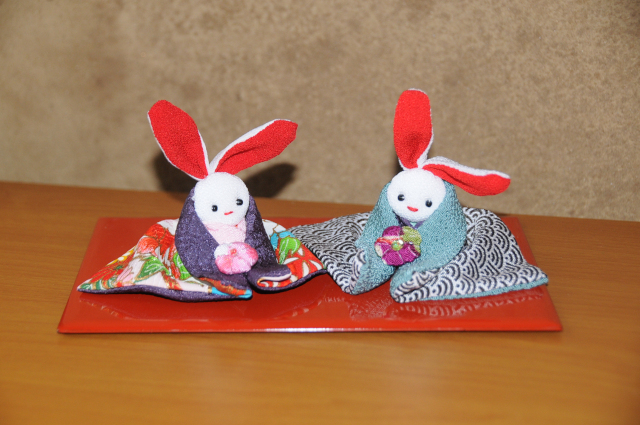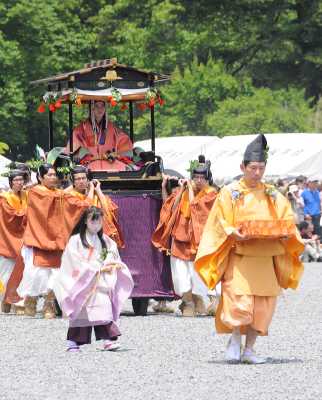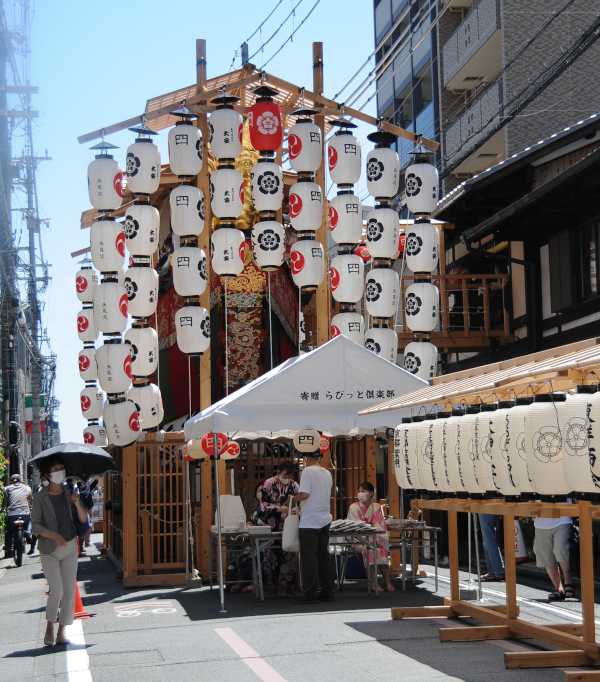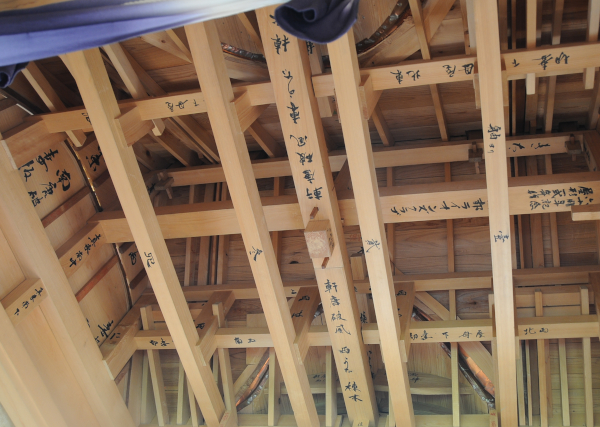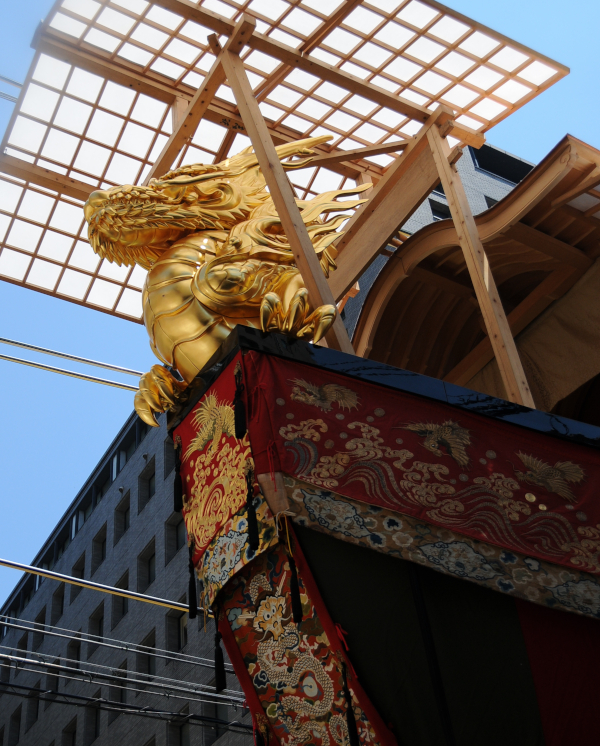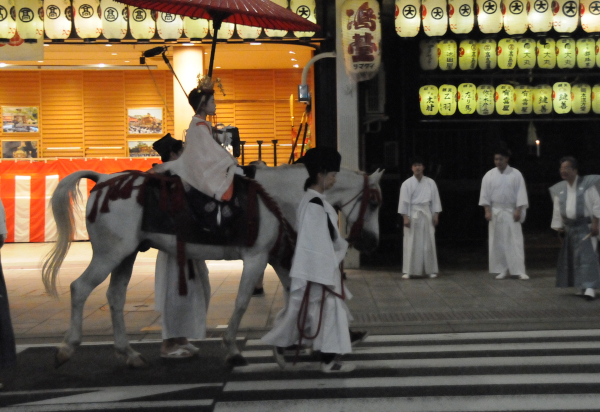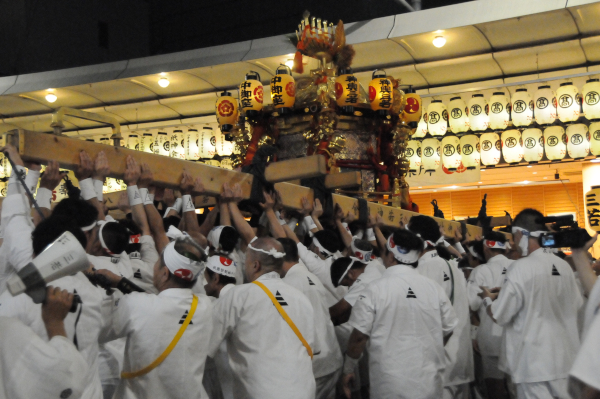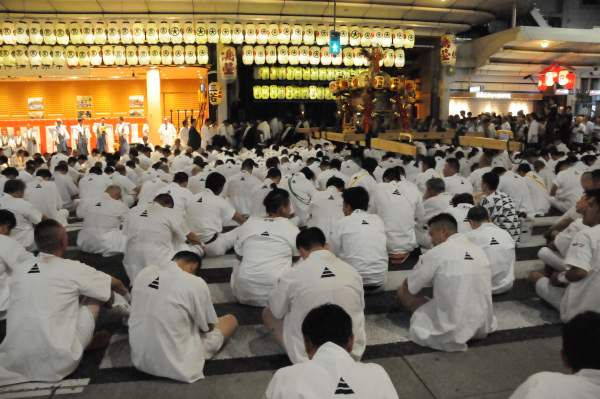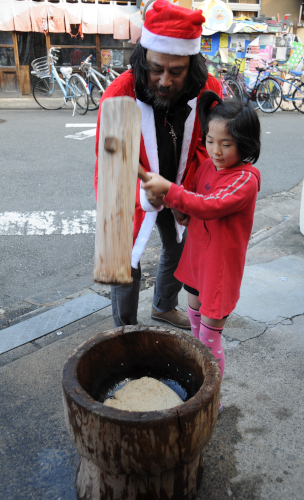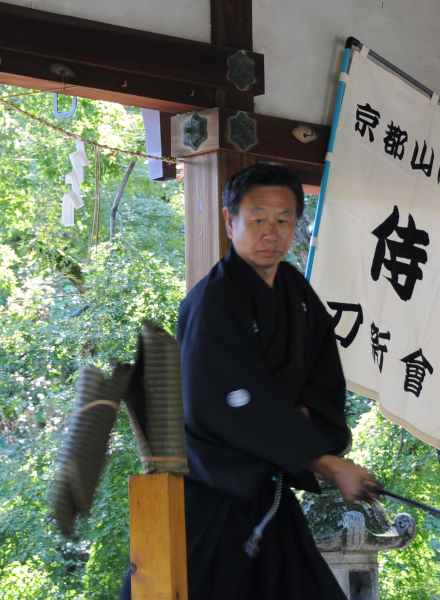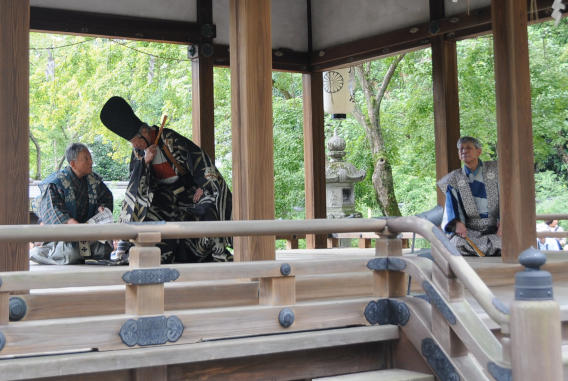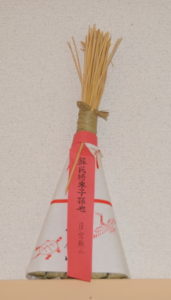Tomorrow, the Aoi Matsuri is taking place, the first of Kyoto’s three big festivals. For the first time in 4 years, a parade will leave the Imperial Palace, visit Shimogamo shrine, and then go on to its final destination, Kamigamo shrine. Of the 500 or so people taking part in the parade, the Saio-dai, who rides in a special palanquin, is the heart of the Aoi Matsuri. These days, she is chosen from among the best families in Kyoto, but in ancient times, she was a daughter of the reigning Emperor.
The practice of sending an Imperial Princess as priestess to Ise shrine started – according to the ancient Nihongi, whose accuracy is doubtful – around the year 92 BCE. The Nihongi states that at that time
“The gods Amaterasu and Ōkunidama were formerly both worshipped in the Emperor’s Palace Hall. But the Emperor Sūjin was frightened of having so much divine power concentrated in one place. Accordingly, he entrusted the worship of Amaterasu to the Princess Toyosuku-iri, bidding her carry it out in the village of Kasanui in Yamato.”
Subsequently, Amaterasu expressed a desire to be moved to Ise.
Becoming a so-called Saigu at Ise shrine was more involved than a mere appointment, at which time the Saigu was around 12 years old. The preparations and purifications took three years, during which the maiden lived at Nonomiya shrine outside of Kyoto in today’s Arashiyama. Only when she was properly prepared, was she allowed to return to the Palace for one last time. There, she received the “Comb of Parting” from her Imperial father, whom she would never see again. This is because her office lasted until
- the Emperor died or resigned
- the Saigu died or became disabled
- either one of her parents died
- or ceased to be a virgin (or worse, became pregnant).
Once Buddhism was introduced from China in the 8th century, it quickly took hold at the Imperial Court. However, Ise shrine was the centre of Japan’s Shintoism, and in order not to offend the old gods, a number of interesting speech taboos were imposed upon the Saigu and everybody else in her retinue. For example, Buddha was called “The Centre”, priests “hair-long”, and temples became “tile-covered places”. Other words with changed meaning revolved around death (recovery), tombs (earthen heaps), illness (taking a rest), and blood (sweat).
The tradition of sending a Saigu to Ise shrine ended in 1342, however, even today, Imperial Princesses take an important role in the worship of Amaterasu at special ceremonies.
The Saio or Saiin – the Imperial Princess serving at the Kamo shrines – was modelled after the Saigu of Ise. It is said that during the Kusho War between the Saga and Heisei Emperors, the former prayed to the gods of Kamo. He promised to send a daughter to the shrines if he would win the war. Subsequently, the first Saio was sent to Kamo in 818, and the practice continued until 1204.
In Kyoto, Aoi Matsuri is the largest festival connected to the Saio of the Kamo shrines. However, in October, the Saigu Gyoretsu Procession at Nonomiya shrine re-enacts the sending of a Saigu to Ise shrine, as she travels through the famous bamboo forest and purifies herself in the river.
Both festivals are unique to Kyoto and provide a fascinating glimpse into times long past. Definitely worth watching!
